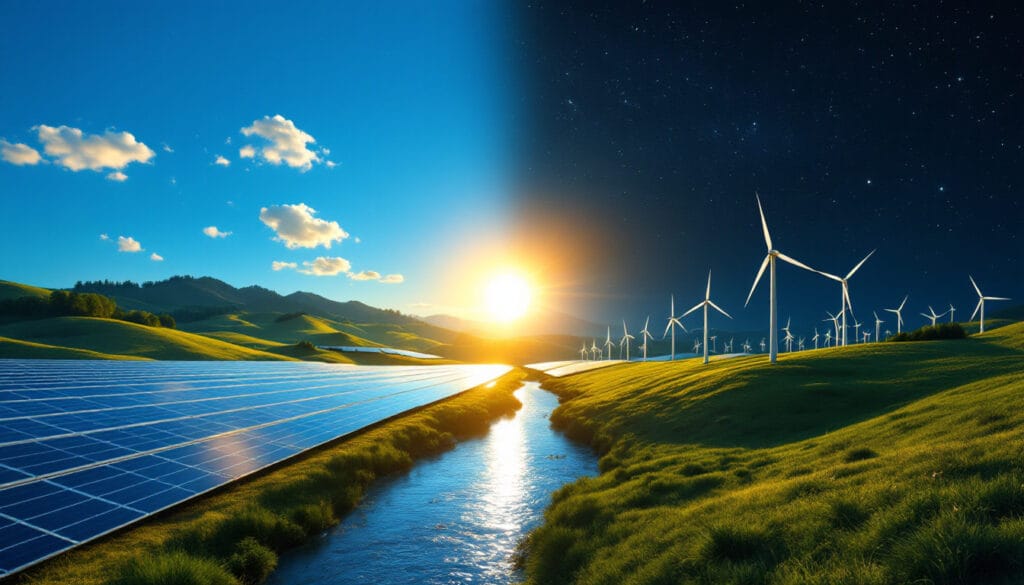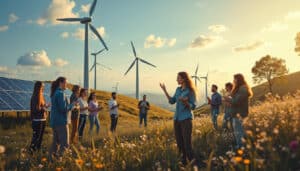Decarbonization is a crucial process for reducing the carbon footprint of our activities and combating climate change. By aiming to decrease greenhouse gas emissions, such as carbon dioxide, this concept relies on the adoption of innovative practices and technologies. It involves gradually phasing out fossil fuels, securing natural carbon sinks, and rethinking our modes of production and consumption. Decarbonization presents itself as a necessary energy revolution to ensure a sustainable future.
Glossary on Decarbonization
Decarbonization: Decarbonization represents the set of measures aimed at reducing or eliminating greenhouse gas emissions, particularly carbon dioxide (CO2), stemming from human activities. It focuses on decreasing the carbon footprint and improving the carbon intensity of industrial processes, in order to limit the impact on climate change.
Carbon Capture and Storage: This technique involves capturing carbon dioxide emitted during industrial processes before it is released into the atmosphere. The CO2 is then stored permanently, often in underground reservoirs. The goal is to reduce the carbon footprint of industrial operations while preserving the integrity of local ecosystems.
Powerful Carbon Sinks: Natural ecosystems like forests and soil act as carbon sinks through their ability to capture and store atmospheric carbon. Securing and restoring these sinks is essential for offsetting residual greenhouse gas emissions.
Renewable Energies: Central to decarbonization, the use of renewable energy sources such as solar, wind, and biomass allows for the gradual replacement of fossil fuels. This change is imperative to achieve carbon neutrality. Explore the challenges and opportunities associated with green hydrogen here.
Carbon-Free Energy: Innovations in oil drilling technologies are transforming this sector into a potential player in carbon-free energy. By substituting fossil energy sources, these new processes contribute to the global energy transition.
Energy Distribution Network: The infrastructure necessary to transport renewable energy from production sites to end consumers may be hindered by network congestion. This phenomenon, well-documented as in the UK, can delay the connection of solar power plants. To better understand this issue, visit here.
Carbon Neutrality: This goal is achieved when CO2 emissions are balanced by an equivalent amount of carbon removed from the atmosphere. Companies voluntarily commit to minimizing their environmental impacts, as exemplified by FPT Industrial’s commitment to carbon neutrality.
Digital Twins: A cutting-edge electronic technology used to optimize and decarbonize transport systems. Discover how these revolutionary tools are being integrated in the UK to support decarbonization efforts here.
Join a free virtual conference on energy transition and decarbonization. To discover more analyses and the major directions for renewable energies planned for 2024, click here. Make sure not to miss this educational opportunity here.

FAQ: Understanding Decarbonization
Q: What is decarbonization?
A: Decarbonization aims to reduce the carbon footprint of human activities. This means decreasing greenhouse gas emissions, particularly by eliminating the use of fossil fuels and capturing the generated CO2.
Q: What are the objectives of decarbonization?
A: The main objective is to minimize the impact of production activities on climate change by significantly reducing greenhouse gas emissions.
Q: How to decarbonize the energy sector?
A: To decarbonize the energy sector, it is essential to ban fossil fuels such as coal, oil, and natural gas. The exploitation of renewable energies such as solar, wind, and geothermal is preferred.
Q: What levers can be used for decarbonization?
A: The capture of CO2, its storage in natural ecosystems (soils, forests…) and the adoption of innovative technologies are essential levers. The use of digital twins, for example, enables the decarbonization of systems such as transport.
Q: Why measure the carbon footprint?
A: Measuring the carbon footprint is crucial to identify the main sources of emissions and to adapt the strategies for reducing CO2 emissions in a targeted and effective manner.
Q: How can industries accelerate their decarbonization?
A: Industries can accelerate their decarbonization process by adopting greener practices, using renewable energies, incorporating green hydrogen, and valuing waste to produce energy.
Q: What technological advances contribute to decarbonization?
A: In addition to renewable energies, new technologies such as fuel cells and the use of digital twins to optimize industrial processes are proving decisive in reducing carbon emissions.
Articles similaires
Thank you!
We will contact you soon.













